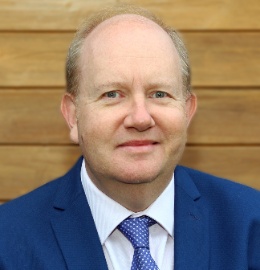- Aerospace
- Air finance
- Airline
- Ascend Consultancy
- Expert view
- Industry trends
Ascend Consultancy Weekly Team Perspective: Airbus and Boeing’s single-aisle successor story
Max Kingsley-Jones, Senior Consultant at Cirium Ascend Consultancy, examines the prospects for the development of replacements for today’s A320neo and 737 Max.

READ ALL OF THE LATEST UPDATES FROM ASCEND CONSULTANCY EXPERTS WHO DELIVER POWERFUL ANALYSIS, COMMENTARIES AND PROJECTIONS TO AIRLINES, AIRCRAFT BUILD AND MAINTENANCE COMPANIES, FINANCIAL INSTITUTIONS, INSURERS AND NON-BANKING FINANCIERS. MEET THE ASCEND CONSULTANCY TEAM.

By Max Kingsley-Jones, Senior Consultant, Cirium Ascend Consultancy
Passers-by to the GE Aerospace stand at February’s Singapore air show will see a scale model of what CFM thinks future turbine powerplants might look like. The GE Aerospace/Safran joint venture’s RISE open-fan concept probably holds more than few clues as to the propulsion technology for a future Airbus single-aisle.
At the Airbus annual press conference earlier this month, CEO Guillaume Faury provided the most detailed update yet around Toulouse’s thinking for an A320 family successor. He clarified that this study is for an all-new “SAF (sustainable aviation fuel) airplane” which is separate to the “ZEROe” project – a sub-100-seater with hydrogen propulsion.
Faury said the Airbus future single-aisle would be a “short- to mid-range” family with service entry targeted for the second half of the 2030s “that will rely on burning 100% SAF”. He explained that Airbus wants to use it to enable the industry’s transition from less than 1% SAF usage today to something much closer to 100% by 2050: “That’s the plane that will be in service at 2050.”
While likely engine technology for this prospective aircraft was not discussed, the CFM RISE project clearly provides one potential avenue for Airbus. CFM says the technology demonstrator will have 100% capability with alternative energy sources such as SAF and hydrogen. It will serve as “the foundation for the next-generation CFM engine that could be available by the mid-2030s”. With its open-fan architecture, RISE has a target to reduce fuel burn and carbon emissions by 20% over today’s engines.
Airbus and CFM plan to start testing a RISE technology demonstrator on an A380 around two years from now.
The planned development timescale for the CFM next-gen powerplant matches that of Airbus. And one of the last times Airbus tested an advanced engine concept – the Pratt & Whitney GTF in 2008 – it went on to power the re-engined A320neo family.

Source: Cirium Fleet Forecast 2023
Cirium’s latest 20-year fleet forecast includes an assessment of the potential delivery stream for next generation single-aisles from Airbus and Boeing. We estimate a potential market for around 8,500 deliveries in the seven years from 2036, as production of today’s A320neo and 737 Max families will begin to decline. We expect the market to be split approximately 50/50 between the two protagonists.
We can only speculate on the likely timing and make-up of seat sizes within these next-gen programmes. But Boeing’s current under-performance against Airbus in the single-aisle sector creates a more urgent need for a replacement, so our hypothesis is that Seattle would come to market slightly earlier.
The initial offering could be a 180-seater from 2036, with smaller 150-seat and 125-seat versions to follow.
Airbus could be around a year behind Boeing, bringing a family of 150-seat and 180-seat single-aisle successors from around 2037. A320neo and 737 Max family deliveries could conclude towards the end of the 2030s.
Programme development is likely to take at least five or six years from go-ahead to the service-entry goal. So to meet the service-entry timeline OEMs would need to target securing commitments and a launch decision from the end of this decade at the latest. But the key pacing item – as ever – will be the progress of powerplant development and the timeframe engine OEMs set to achieve their performance and – crucially – durability goals.
SEE MORE ASCEND CONSULTANCY POSTS. LEARN MORE ABOUT Cirium Fleet Forecast. OR FOR MORE INFORMATION, CONTACT US.





























































